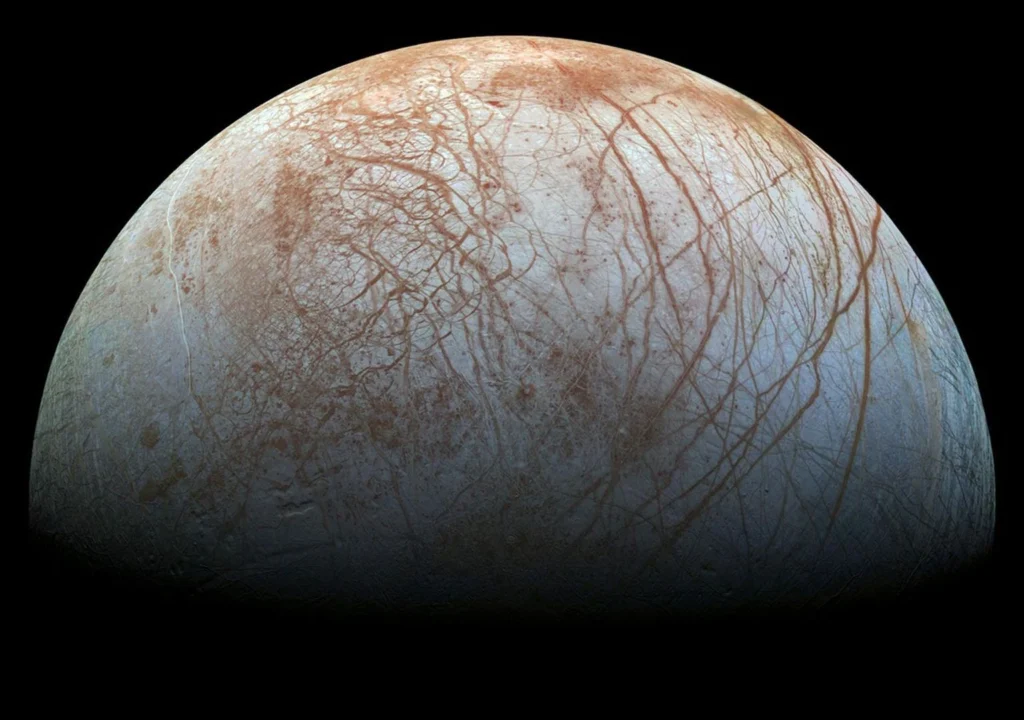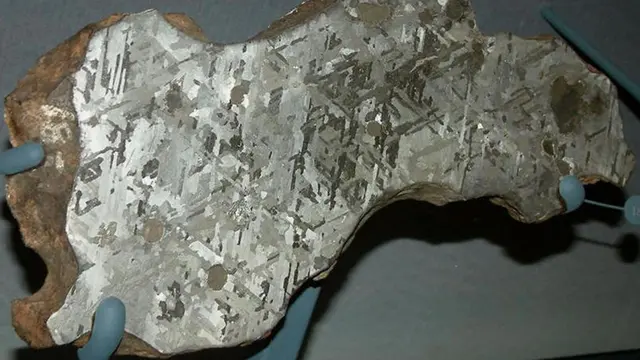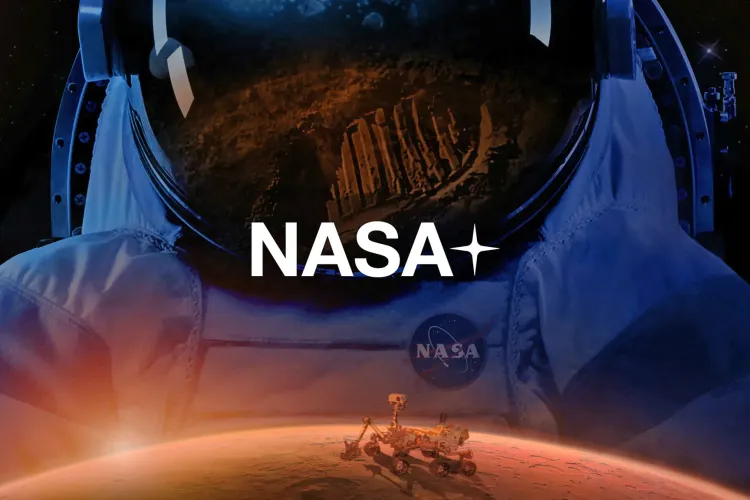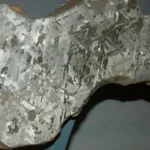Europa: Jupiter’s Icy Moon and the Search for Alien Life

Europa, one of Jupiter’s most captivating moons, has been a source of fascination for scientists and space enthusiasts alike. Imagine a place where a vast, hidden ocean sloshes beneath a crust of ice, warmed not by sunlight but by the immense gravitational pull of a giant planet. This is Europa, a small moon with big possibilities, including the tantalizing potential for life beyond Earth.
What Makes Europa So Speial?
At first glance, Europa might not seem extraordinary. It’s about the size of our own Moon, with a surface that’s frozen solid and crisscrossed by reddish-brown lines, like an icy canvas painted with mysterious streaks. But beneath this icy exterior lies something incredible: a massive ocean, twice as large as all of Earth’s oceans combined.
What’s keeping this ocean from freezing solid? Europa’s unique relationship with Jupiter. As the moon orbits the giant planet, gravitational forces constantly stretch and flex its interior, generating heat through a process called tidal heating. This keeps the water in a liquid state and could even create conditions similar to the hydrothermal vents on Earth’s ocean floors—places that teem with life despite the absence of sunlight.
Physical Characteristics of Europa
1. Size and Orbit
Europa is the smallest of Jupiter’s Galilean moons, with a diameter of about 3,100 kilometres—slightly smaller than Earth’s moon. Orbiting Jupiter every 3.5 days, it lies at an average distance of 670,900 kilometres from the gas giant. Despite its small size, Europa’s unique features make it a critical focus of scientific research.
2. Surface and Composition
Europa’s surface is a strikingly smooth and bright expanse of water ice, crisscrossed by reddish-brown streaks called lineae. These lines are fractures in the ice, filled with material from the moon’s interior. Unlike other moons, Europa has few impact craters, indicating that its surface is geologically young, likely less than 100 million years old.
3. Subsurface Ocean
One of Europa’s most intriguing features is the subsurface ocean beneath its icy shell, estimated to be 15–25 kilometres thick. Scientists believe this ocean could be 60–150 kilometres deep, containing twice as much water as all of Earth’s oceans combined. This discovery has sparked immense interest in Europa as a potential habitat for life.
4. Atmosphere
Europa has a tenuous atmosphere composed primarily of oxygen. However, this oxygen is not produced biologically; instead, it results from the interaction of solar radiation and charged particles with the icy surface.
A Potential Home for Life?
For decades, Europa has been one of the most promising places in the solar system to search for alien life. The idea isn’t just science fiction—it’s based on solid science. On Earth, life thrives in extreme environments, from deep-sea vents to frozen Antarctic lakes. If Europa’s ocean has the right ingredients—liquid water, energy, and organic molecules—who’s to say microbes, or something more complex, couldn’t exist there too?
Even Europa’s ice shell, while a barrier, could help rather than hinder life. It might protect the ocean below from Jupiter’s intense radiation, creating a stable environment where life could develop. And thanks to recent discoveries of water vapour plumes shooting out from the moon’s surface, scientists think we might not even need to drill through the ice to look for clues—Europa might be delivering them to space on its own.
How Did We Learn All This?
Europa’s secrets have been slowly unveiled over decades of exploration. Back in the 1990s, NASA’s Galileo spacecraft took a close look at Europa and gave us our first evidence of its subsurface ocean. Since then, the Hubble Space Telescope has spotted those water vapour plumes, making scientists even more eager to investigate.
Now, the stage is set for two ambitious missions to Europa:
- Europa Clipper (launching in 2024) will orbit Jupiter and make nearly 50 flybys of Europa, studying its surface, measuring the depth of its ocean, and analyzing its thin atmosphere. Think of it as a detective gathering every possible clue before deciding where to dig deeper.
- JUICE (Jupiter Icy Moons Explorer), a mission from the European Space Agency, will take a broader look at Jupiter and its moons, including a couple of close encounters with Europa.
Together, these missions could answer some of the biggest questions about this icy world.
Why it Matters?
Why should we care about a frozen moon hundreds of millions of miles away? Because Europa might hold answers to one of humanity’s most profound questions: Are we alone?
If even the simplest life forms are found on Europa, it would transform our understanding of biology and show that life can thrive in places we never thought possible. It would also reshape how we look at other icy worlds, like Saturn’s moon Enceladus or even distant exoplanets.





